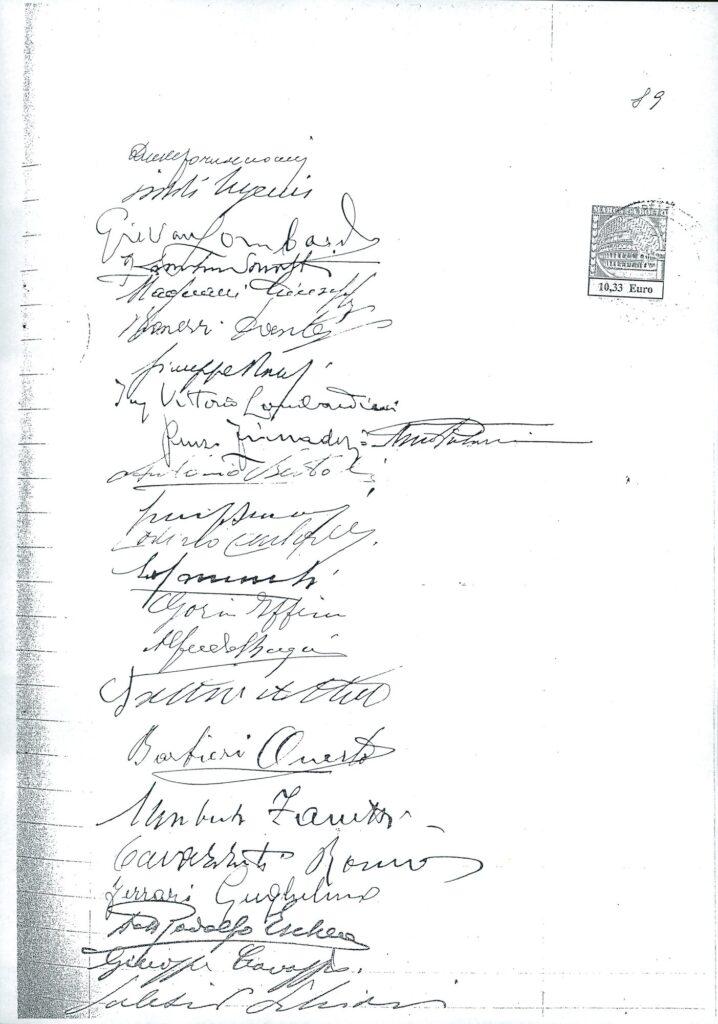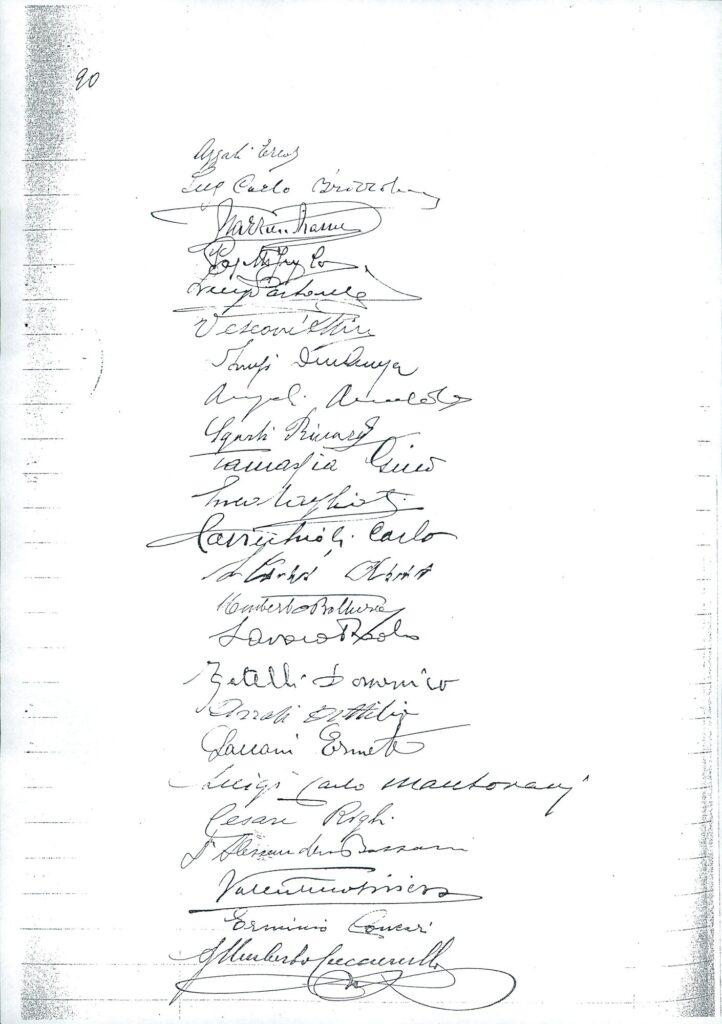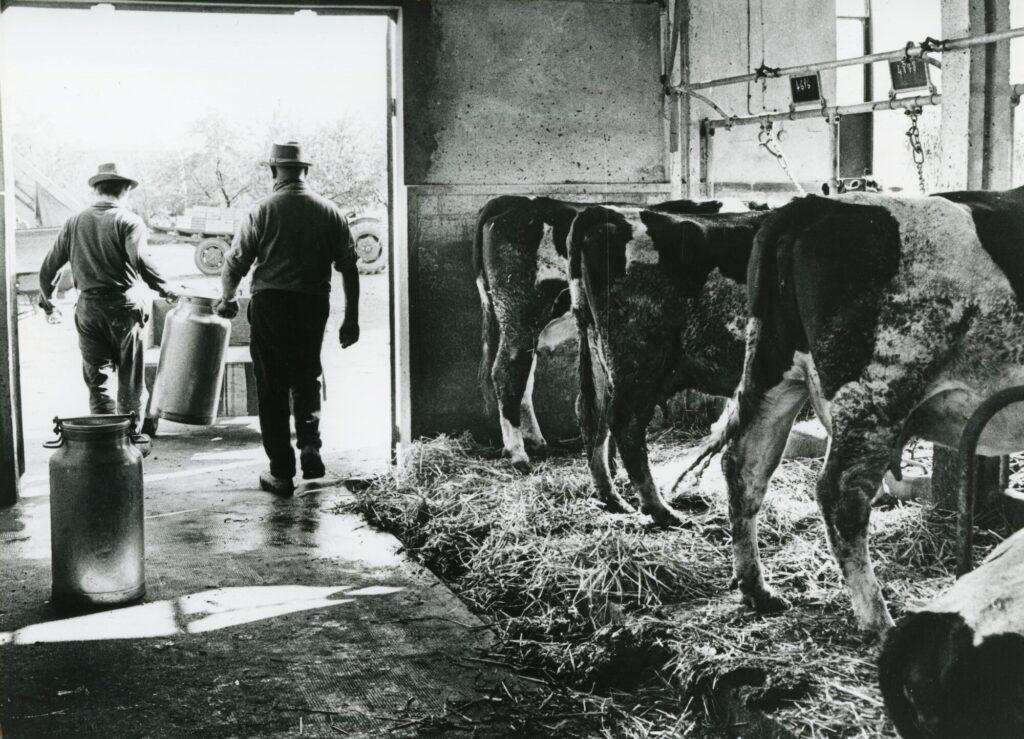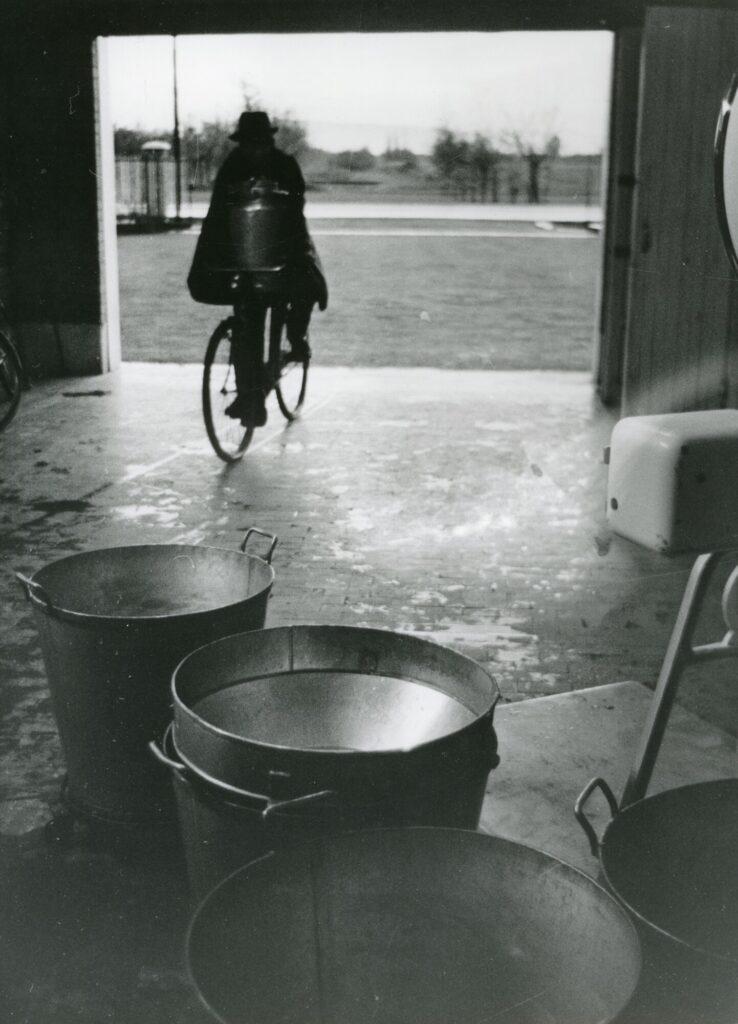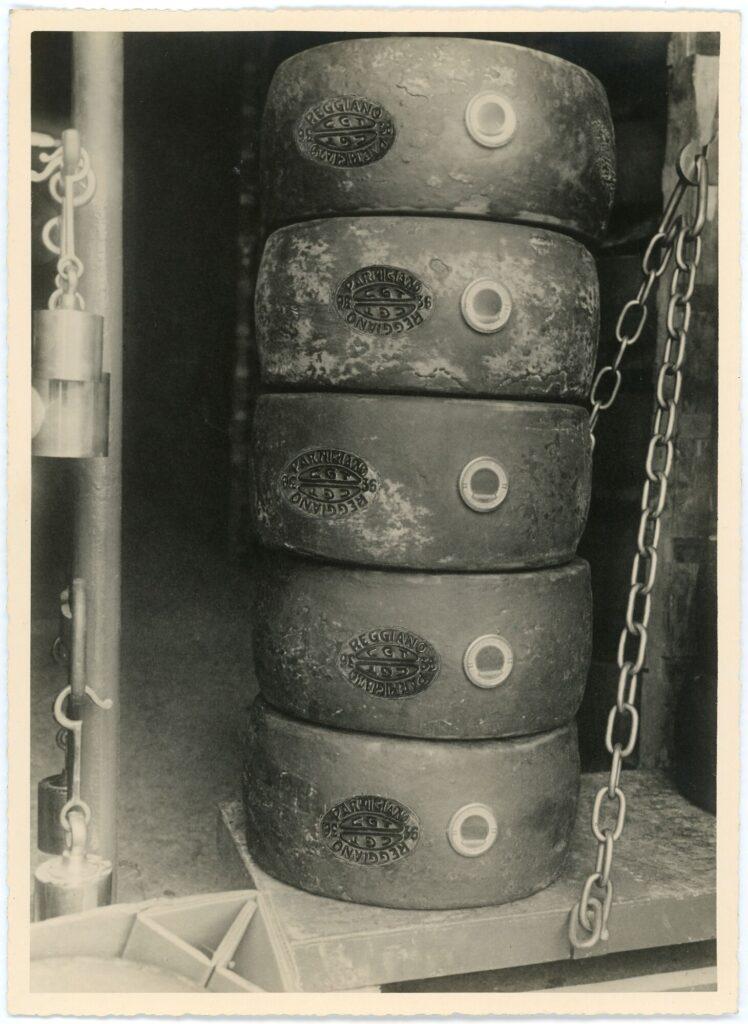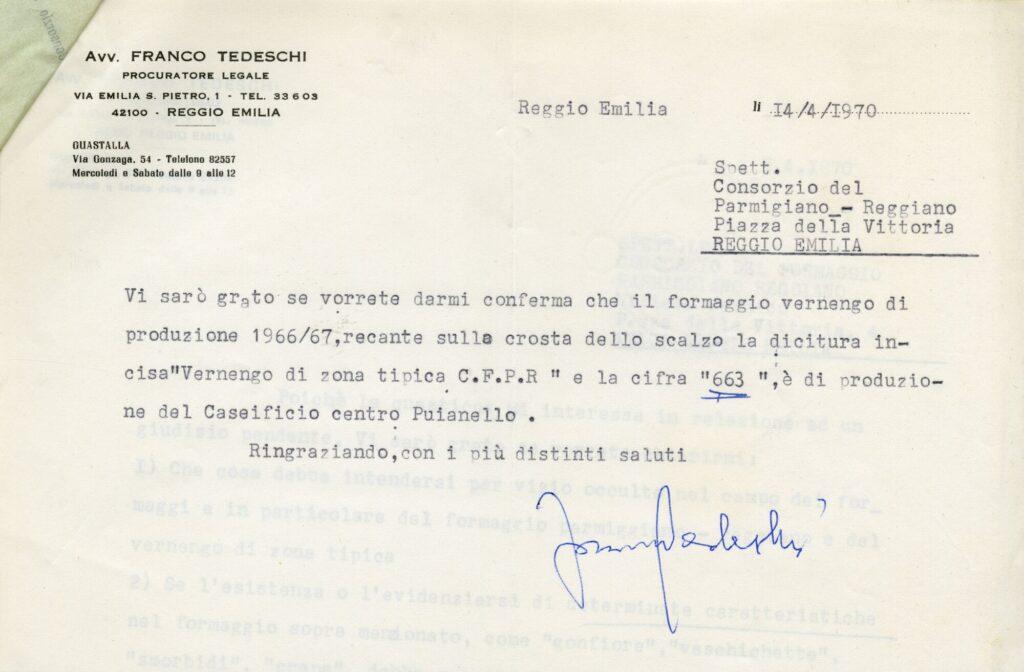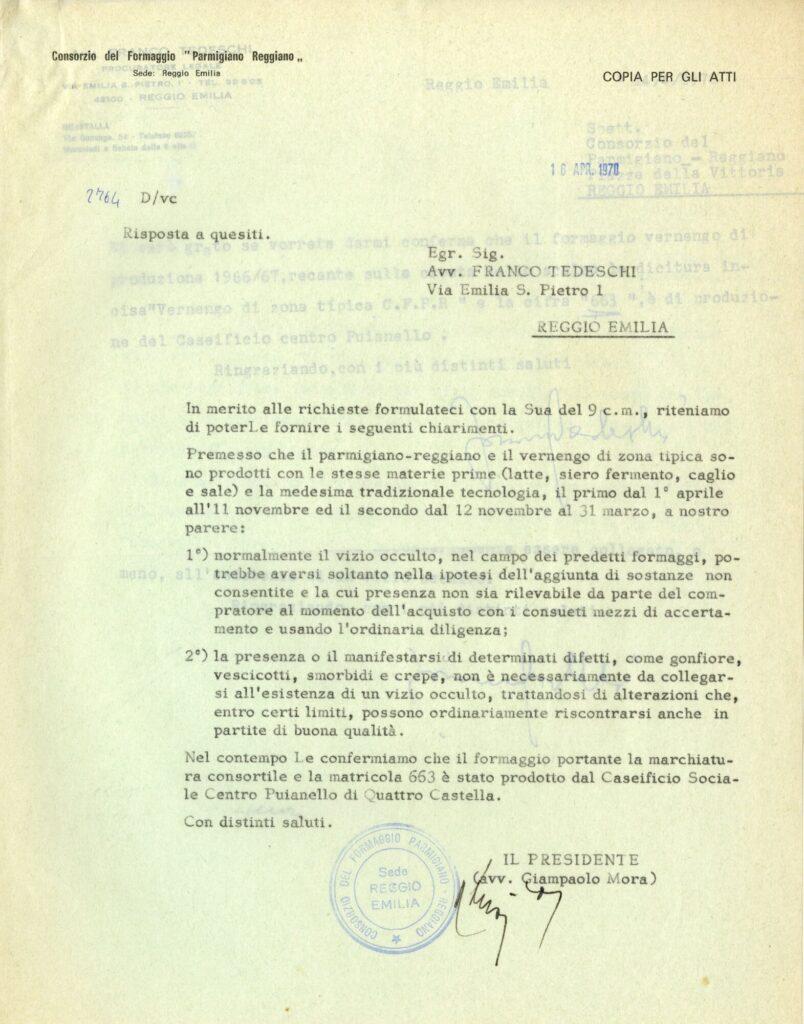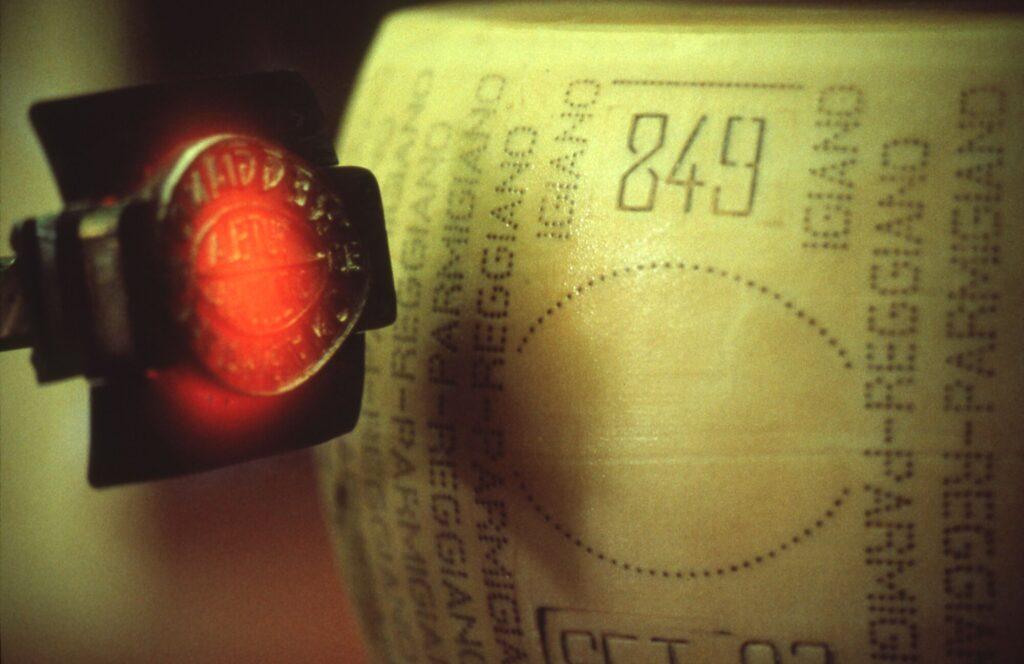Passing down the fire


What is Parmigiano Reggiano? It is the result of a deep, natural bond between humans and their lands. It is the product of traditional techniques, knowledge and true passion, unparalleled on an international level.
As we say: Parmigiano Reggiano is “made, not produced”.
The ingredients are simple. An unmistakable flavour and a layered, thousand-year-old history. But how do we tell this amazing story? It is an ancient pact, between humans and the surrounding lands. It is enshrined in strict Production Regulations, which protect the how, the when, and the secrets of this deep-rooted relationship.
THE BIRTH OF THE CONSORTIUM
One of the key milestones in this story took place during the early years of the 20th century. With the creation of the inter-provincial “Grana Tipico” Consortium, which later became Consorzio del Formaggio del Parmigiano Reggiano, it became possible to join forces in order to hand down, safeguard and renew the traditions of what is not just a cheese, but also an art, a wisdom and a true symbol of farming culture. But it did not end there. At the same time, the goal was also to have a direct line of dialogue with the rest of the world.
Together
The first date is 1934. It was the year the “Grana Tipico” Interprovincial Consortium was established. In the provinces of Parma, Reggio Emilia, Modena, and Mantua (lands where the dairy industry played a vital role in the agricultural economy), there was an emergency, and the representatives of the provinces decided to tackle it together.
The emergency consisted of competition from a variety of national and international dairies – often imitations – that were making Grana cheese. It was deliberately confused with “Parmigiano” and “Reggiano”. The competition’s lower quality also corresponded to a lower sales price. The area was already experiencing an economic depression, which threatened to aggravate it further. Therefore, on July 27, 1934, the provinces joined forces to create the Consorzio Interprovinciale Grana Tipico, signed by the most important producers of the four territories that were involved. Then, in 1937, it also began to include the province of Bologna to the left of the Reno.
In the founding document, the main objectives were twofold: the delimitation of the grana tipico production area, and the distinction of the product via the marks of origin on the wheels of the cheese. From the outset the cheese featured an oval “PARMIGIANO REGGIANO” firebrand – joining the two terms “Parmigiano” and “Reggiano” that indicated the geographical territories of origin – as a symbol of quality to protect the designation and to facilitate trade.
Given the global crisis, this move also counteracted customers’ approach to low-quality counterfeit products.
On February 26, 1935, after the first experiments, the President of the Consortium spoke positively about the branding operation and reiterated the need to perfect the technical control of the product and the collaboration between the provinces. It was then unanimously voted that only cheeses manufactured between April 24 and October 31 of each cheese season should be branded.
After the Stresa Conference in 1951, where the Denominazioni d’Origine (designations of origin) for cheeses were recognised internationally, Italian law also recognised designations of origin in 1954. History was made at this fundamental moment in time. The previous Consorzio Interprovinciale Grana Tipico of 1934 had laid the foundation for the organisation that then took over its legacy, and took the reins of the institutional actions, albeit with a new name by deed of incorporation.
It became the “Consorzio del Formaggio Parmigiano Reggiano“.
Those years were crucial. They started preparing the foundations for the activities that would follow in the coming decades. The objectives remained basically the same: protection of the Denomination of Origin and policies to facilitate trade and consumption by defending the qualities and typical traditions of the product, allowing it to be more widely disseminated. Above all, the Consortium worked on the Production Regulations, focusing and acting on the distinctive elements of Parmigiano Reggiano through the drafting of the production standard. Since its first draft in 1955, it stated that for cows “the basic feed consists of fodder from polyphytic meadows and alfalfa” and that “the use of anti-fermentative substances is not permitted”.
WHAT DID NOT CHANGE
What happens if we compare the standard of Parmigiano Reggiano cheese in the Presidential Decree of October 30, 1955 with the standard in the 2002 Production Regulations? We find several items that have not changed or only partially changed.
Over the years, the Consortium has secured Parmigiano Reggiano. How? Through protective actions, of course, but above all, it has worked consistently to improve its nutritional values and its taste. Research, analysis, and studies have led to a further evolution that we can enjoy still today. It is simply a better cheese, balanced in flavour, and perfected to become what we know.
In short, Parmigiano Reggiano is no longer produced the way it was nine centuries ago. Yet, it still retains the same ingredients and the same spirit. With the changes to the specifications, we have taken a step towards modern times, but only in order to maintain its superb identity and values over time.
The quality of the Parmigiano Reggiano we eat today is much higher. It is not true that it used to be better; people’s tastes, raw materials, and production methods are more sophisticated, guaranteeing a better final yield of the cheese.
— Gianni Morini, Consorzio Parmigiano Reggiano battitore (beater).
The taste for cheese has changed over time just as production techniques have modernised and become more precise and faster. However, we have not touched the deep-rooted philosophy of Parmigiano Reggiano. Today, it is a little fattier, less salty, and less spicy, but it is still made from raw, unrefrigerated, unpasteurised milk delivered twice daily. And, of course, it is still made according to an artisanal knowledge that over time has been able to refine and adapt to changing production conditions while knowing how to pass on the distinctive cheese culture.
AMENDMENTS TO THE SPECIFICATION
The tradition of today is the innovation of the past.
– Mauro Pecorari, Consorzio Parmigiano Reggiano technical office.
The specifications regulate the Parmigiano Reggiano production methods. The methods are experienced in an almost sacred way, so changes have always been interpreted as momentous shifts. Every idea and retouching has required a lot of motivation and collaborative work. It is a practical but also a philosophical matter.
TERRE D'OMBRA AND BRANDING
Initially, the rind of Parmigiano Reggiano was a very dark colour. It was a low-fat cheese, and its structure was mostly protein-dense and dry. For this reason, it had to be coated with a protective paste that helped retain the moisture inside the cheese, protecting the rind from breaking due to excessive dehydration.
This process is called “cappatura‘”. Cheesemakers or warehouse keepers all had their own secret recipes, but they were generally made from clay (terra d’ombra), grape-seed oil, ash, or charcoal (called nerofumo or “lampblack”). The result was a clay-like consistency that protected the interior while covering any external defects.
Then, over time, there was a change in the warehouses where the cheese was aged, as they adopted temperature and humidity controls and improved the ageing spaces. In addition, Parmigiano Reggiano became a little fattier, reducing the perception of the cheese’s dryness. In the second half of the 20th century, the terra d’ombra was abandoned in favour of a yellow rind, naturally obtained through the curing process.
Furthermore, as pre-portioning had become customary, the whole wheel had to be marked to identify the cheese in order to avoid the risk of fraud.
And so it was that in 1964 a critical reform was implemented. It was ratified on December 17, 1963, when a new method was discussed. The experiments of this new method had yielded good results. There would be markings across the whole wheel by using a branding band. Ever since April 1, 1964, the band has been utilised by inserting it between the fascera (the wooden mold with which the mass of fresh cheese is shaped) and the wheel. The words “Parmigiano Reggiano” are indelibly stamped on the cheese, repeating over the entire surface. The words are made up of 9,824 small dots, and they also feature the dairy’s serial number and the month and year of production.
PARMIGIANO REGGIANO ALL YEAR ROUND
Then, the 1980s arrived, and some significant decisions were made. One of them, perhaps the most difficult, is the kind of decision that goes “against” tradition on the surface, but is actually a natural outcome of the times. An example is Vernengo.
Until the middle of the decade, Parmigiano Reggiano was only produced between April 1 and November 11. These were the dates that opened and closed the agricultural year. Until then, calf births on farms were concentrated in the springtime. Therefore, the highest milk production coincided with the abundance of fodder in the fields.
The so-called Maggengo or head cheese was followed by the Agostano, while the late or tail cheese closed the production period in autumn.
In winter, however, Vernengo was produced. The cheese was made from cows that were at the end of lactation and fed plenty of hay, and their milk was now less rich when it came to productive elements. The cheese that was produced was lower quality than Parmigiano Reggiano. Since May 22, 1965, the two cheeses had been specifically differentiated by branding the Vernengo cheese with the words “Vernengo di zona tipica“.
The dairies were therefore designed and structured to be functional in the spring-summer, when the grass was better and more plentiful. The cows were better fed, and the milk was consequently more abundant and of higher quality.
However, over time, the ways herds were set up with modern animal husbandry have led to a distribution of births and milk production throughout the year. The organisational and hygienic conditions of the cowsheds have made a quantum leap, so the management and feeding of the cows has improved throughout the year. Parmigiano Reggiano could consequently be produced without interruption. The only remaining seasonality was linked to the heat of the summer months, when the cows suffer because of the hotter temperatures and consequently reduce production. In 1984, when the traditional distinction was no longer needed, Vernengo cheese was no longer produced.
With the 1990s came further substantial changes. In those years, the minimum requirement for branding Parmigiano Reggiano was extended to twelve months of ageing. Since 1991, the Parmigiano Reggiano designation of origin has also been given to the Grated cheese.
We now have arrived at a historical moment. In 1992, the European Community enacted the landmark legislation on Protected Designations of Origin (DOP/PDO), which established the rules for recognising the connection between certain food products and their territory of origin, and protects the designations. And then we move on to 1996. On June 21, subsequent to an Italian request, the European Community approved the registration of the name “Parmigiano Reggiano” as a DOP/PDO. This succeeded in laying the foundations for protecting the name “Parmigiano Reggiano” in the adhering European countries, a protection that will have its highest expression in the “Parmigiano Reggiano” ruling of the European Court of Justice in February of 2008.
The rules continued, and in the new millennium, two necessary regulations arrived. Since 2001, a unique identification code has been added to each wheel of Parmigiano Reggiano by means of a casein plate added when the cheese is placed in the mold. Together with the branding and the dotted writing on the outside of the cheese, this addition makes the origin and traceability unmistakable. It is a way to make “the identity card of Parmigiano Reggiano” even more incisive, as they used to say in the 1960s.
PROTECTING SECRETS
2011 is the latest chapter in this story of rules that govern quality, beauty, tradition, and flavour. It concerns the obligation of packaging within the area of origin of Parmigiano Reggiano, not just for grated cheese but also for pre-packaged portions – with or without the rind. It is to improve quality assurance, traceability, and control over what is put on the market.
The only way to maintain a unique flavour, an expression of the territory of origin and its culture, is to protect it, understand its secrets, and allow it to evolve with changes to the specifications that maintain the groove of tradition. We accompany and guarantee this evolution with firebrands, colours, names, and rules. To defend, safeguard and increasingly increase the quality and history of a product that is not just a “product”, but something that contains the very life of the places, people and animals that have guarded it and given birth to it: a cheese that is an infinite stratification of knowledge, ideas, and traditions.
THE HOME OF A FLAVOUR













